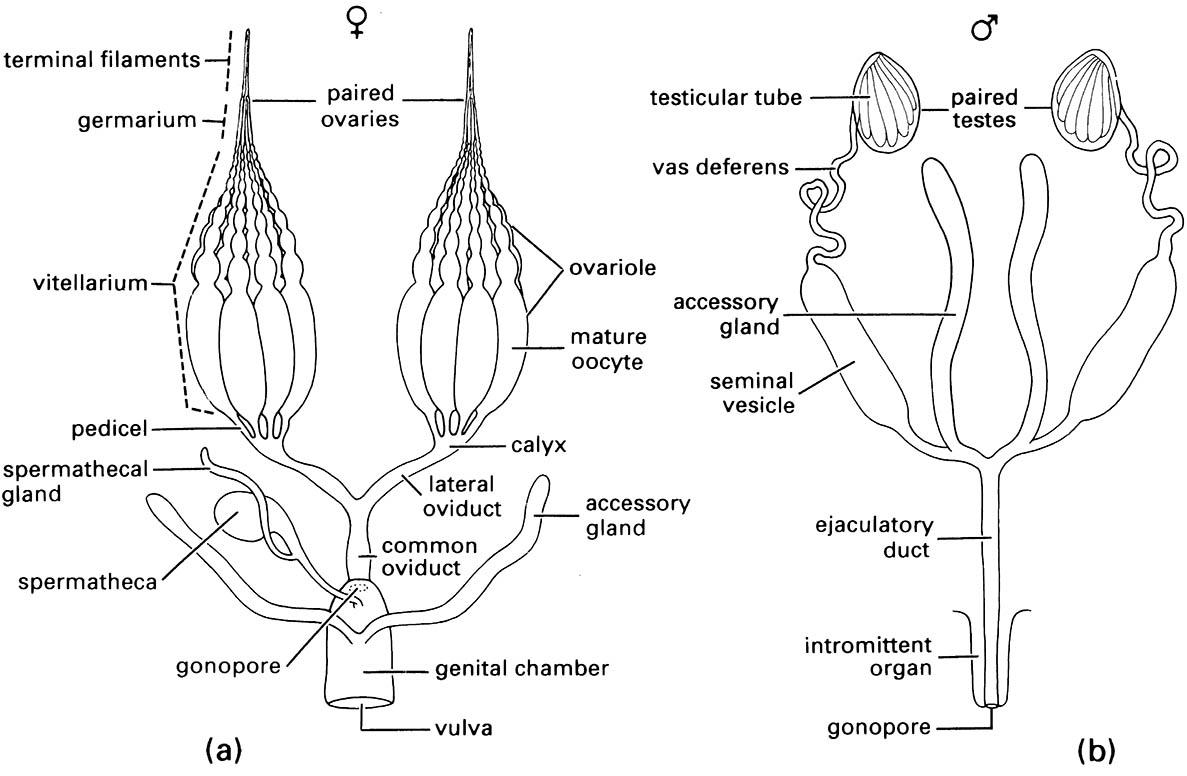3.8.2. The male system
The main functions of the male reproductive system are the production and storage of spermatozoa and their transport in a viable state to the reproductive tract of the female. Morphologically, the male tract consists of paired testes each containing a series of testicular tubes or follicles (in which spermatozoa are produced), which open separately into the mesodermally derived sperm duct or vas deferens, which usually expands posteriorly to form a sperm storage organ, or seminal vesicle (Fig. 3.20b). Typically, tubular, paired accessory glands are formed as diverticula of the vasa deferentia, but sometimes the vasa deferentia themselves are glandular and fulfill the functions of accessory glands (see below). The paired vasa deferentia unite where they lead into the ectodermally derived ejaculatory duct — the tube that transports the semen or the sperm package to the gonopore. In a few insects, particularly certain flies, the accessory glands consist of an enlarged glandular part of the ejaculatory duct.
Thus, the accessory glands of male insects can be classified into two types according to their mesodermal or ectodermal derivation. Almost all are mesodermal in origin and those apparently ectodermal ones have been poorly studied. Furthermore, the mesodermal structures of the male tract frequently differ morphologically from the basic paired sacs or tubes described above. For example, in male cockroaches and many other orthopteroids the seminal vesicles and the numerous accessory gland tubules (Fig. 3.1) are clustered into a single median structure called the mushroom body. Secretions of the male accessory glands form the spermatophore (the package that surrounds the spermatozoa of many insects), contribute to the seminal fluid which nourishes the spermatozoa during transport to the female, are involved in activation (induction of motility) of the spermatozoa, and may alter female behavior (induce non-receptivity to further males and/or stimulate oviposition; see sections 5.4 & 5.11, and Box 5.4).

(After Snodgrass 1935)

The fat body and most of the tracheae have been removed; most details of the nervous system are not shown.

